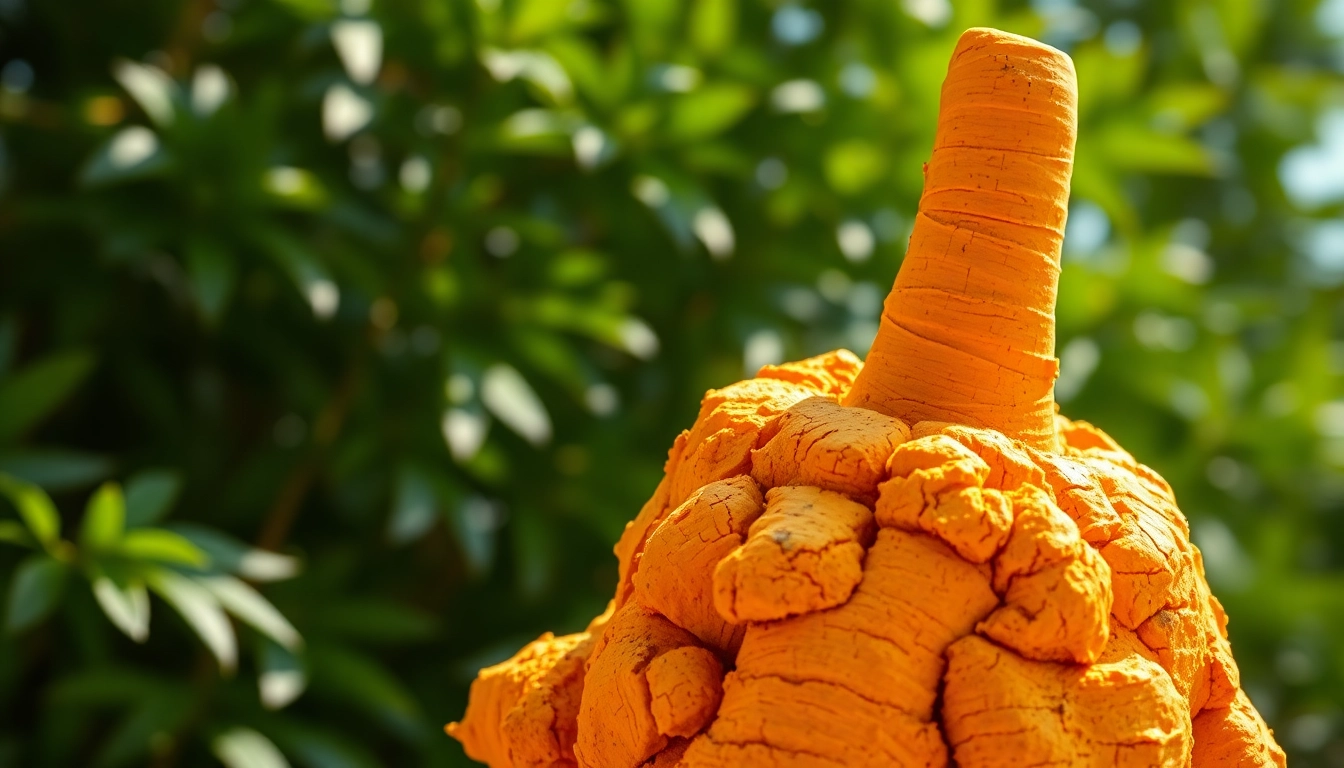Understanding Coffee Beans
Coffee is not just a drink; it’s a cultural experience, a morning ritual, and for many, a necessary jolt to kick-start the day. At the heart of this beloved beverage are coffee beans, the seeds of the Coffea plant that undergo an intricate journey from farm to cup. To appreciate the rich flavors and aromas of coffee, one must first understand the origins, processing methods, and flavor profiles of these remarkable beans. You can explore a range of Coffee Beans to discover various types and blends that cater to diverse palates.
Origin and Varietals of Coffee Beans
The journey of a coffee bean begins in the tropical climates of the world, predominantly found in the so-called “coffee belt” located between the Tropics of Cancer and Capricorn. Here, two main species of coffee beans dominate the market: Arabica and Robusta. Arabica beans are celebrated for their sweetness and complexity, accounting for about 60-70% of global coffee production. They flourish at high altitudes, where cooler temperatures help develop their intricate flavors. Contrarily, Robusta beans have a stronger, more bitter taste and higher caffeine content, thriving at lower altitudes and in harsher conditions. Understanding these varietals is crucial for selecting the right coffee for your brewing preferences.
How Coffee Beans Are Processed
Once harvested, coffee beans undergo several processing methods that greatly influence their final flavor. The two primary processing methods are the washed (or wet) method and the natural (or dry) method. In the washed process, the fruit is removed, and the beans are fermented to enhance clarity and brightness in taste. This method often produces a cleaner flavor profile, highlighting the bean’s inherent characteristics. On the other hand, the natural method involves drying the whole fruit in the sun before removing the cherry, imparting more fruity and fermented notes to the beans. Different countries and regions may have unique processing techniques, each adding a distinct signature to the coffee’s flavor.
Flavor Profiles of Different Coffee Beans
The flavor profile of coffee beans is an intricate tapestry of aromas, flavors, and acidity levels. Coffee from Central America often boasts bright acidity and nutty undertones, while Ethiopian coffees are known for their floral and fruity notes, showcasing the vast variety of tastes available. For example, a Guatemalan coffee might display chocolate and caramel notes with a full body, contrasting with a light-bodied, citrusy Kenyan coffee. Understanding these flavor profiles can significantly enhance your coffee experience, allowing you to select beans that not only satisfy your palate but also complement different brewing styles.
Choosing Quality Coffee Beans
With the proliferation of coffee choices in the market, learning how to choose quality coffee beans is essential. Not all beans are created equal, and understanding what makes a superior coffee can elevate your brewing experience and result in a more fulfilling taste journey. Quality beans often come from reputable sources and are meticulously harvested and processed.
What to Look for When Selecting Coffee Beans
When choosing coffee beans, look for information on the packaging such as the origin, roast date, and flavor notes. Freshness is paramount; beans that have been roasted within the past two weeks tend to retain the highest quality. Specialty coffee, often labeled with a high grade by knowledgeable professionals, is another good indicator of quality. Look for single-origin beans if you wish to explore specific flavors tied to particular regions.
How Freshness Affects Coffee Beans
Freshness significantly impacts the flavor and aroma of coffee. Coffee tastes best when brewed within weeks of roasting. As air, light, and moisture can cause coffee to oxidize, leading to stale flavors, selecting coffee beans with a clear roast date ensures optimal freshness. Be wary of pre-ground coffee as it tends to lose its delectable aromas and flavors rapidly. Grinding whole beans right before brewing enhances the overall experience, offering a richer and more vibrant cup of coffee.
Organic vs. Conventional Coffee Beans
The debate between organic and conventional coffee beans often centers around farming practices and sustainability. Organic coffee is grown without synthetic fertilizers or pesticides, promoting healthier soil and ecosystems. While some argue that organic beans may exert a more significant environmental impact due to lower yields, others contend that they offer a cleaner and often richer flavor profile. Ultimately, the choice may depend on personal values regarding sustainability, health, and taste preferences.
Brewing Techniques for Coffee Beans
The method of brewing significantly influences the taste and quality of your coffee. Understanding various brewing techniques allows you to extract the most flavor from your chosen coffee beans, ensuring that each cup is a delightful experience.
Best Methods for Brewing Different Coffee Beans
Different types of coffee beans shine in various brewing methods. For example, a light, fruity Ethiopian bean is particularly well-suited for pour-over brewing, which highlights its delicate flavors. Medium to dark roasts, like Colombian or Brazilian beans, can be delicious with a French press, where their rich, robust flavors are fully extracted. Espresso machines are ideal for showcasing the strengths of Arabica beans, leading to a concentrated shot that captures the essence of the bean.
Equipment Recommendations for Coffee Beans
To brew the best coffee, using the right equipment is crucial. A quality burr grinder is necessary for achieving uniform grind size, which is vital for optimal extraction. For brewing, options such as French presses, pour-over cones, espresso machines, and AeroPress devices provide varying benefits and flavors. Investing in a good quality coffee maker and kettle can enhance the brewing process, making it easier to control temperature and brew time, ultimately leading to better coffee.
How Grind Size Affects the Brewing Process
The grind size of coffee beans dramatically impacts extraction and flavor. A fine grind increases surface area, leading to more rapid extraction, which is ideal for espresso. Conversely, coarser grinds are suited for methods like French press or cold brew, where longer steeping times are employed. Understanding the relationship between grind size, brewing time, and method can help ensure that the flavors of your coffee beans are perfectly extracted.
Storage Solutions for Coffee Beans
Proper storage of coffee beans is essential for maintaining their freshness, flavor, and aroma. The way you store your beans can mean the difference between a vibrant cup of coffee and a stale one.
Optimal Conditions for Storing Coffee Beans
To keep coffee beans at their best, store them in an airtight container in a cool, dark place. Exposure to light, heat, and moisture can each contribute to the degradation of flavor. Consider using a dedicated coffee canister that minimizes air exposure. Avoid storing beans in the refrigerator, as the moisture can cause them to become stale more rapidly.
Common Mistakes in Coffee Beans Storage
One of the most common mistakes in storing coffee beans is buying in bulk without considering how quickly they will be consumed. If beans are not consumed within a reasonable timeframe, they can lose their freshness. Additionally, keeping coffee by the stove or near sunlight can affect their quality. It’s also crucial to avoid freezing or refrigerating beans, as both can introduce unwanted moisture.
How Long Do Coffee Beans Last?
Typically, whole coffee beans can stay fresh for up to two weeks to one month after the roast date, depending on storage conditions. After that, they may become stale, losing their vibrant flavors and aromas. While roasted coffee does not spoil in the traditional sense, the freshness can significantly degrade. To maximize flavor retention, consider purchasing smaller quantities of coffee, and always prioritize beans with a recent roast date.
Health Benefits of Drinking Coffee Beans
Beyond the delightful experience of drinking coffee, there are multiple health benefits associated with coffee beans. Understanding these advantages can help you appreciate your daily brew in a new light.
Antioxidants in Coffee Beans
Coffee is rich in antioxidants, which can help reduce inflammation, improve overall health, and lower the risk of chronic diseases. The primary antioxidants in coffee—chlorogenic acids—are linked to numerous health benefits, such as better metabolism. Integrating coffee into a balanced diet may assist in combatting oxidative stress, contributing to overall health and well-being.
Effects of Coffee Beans on Mental Alertness
The caffeine found in coffee beans acts as a natural stimulant, improving mental alertness and concentration. Studies suggest that moderate coffee consumption can enhance cognitive functioning, supporting memory and reaction times. However, moderation is key; excessive consumption may lead to increased anxiety or restlessness.
Potential Health Risks of Coffee Beans
While coffee has many health benefits, it is not without its risks. Overconsumption can lead to sleep disturbances, digestive issues, and increased heart rate in some individuals. Pregnant individuals are often advised to limit their coffee intake due to potential impacts on fetal development. As with any dietary component, it’s essential for consumers to be aware of their bodies’ responses and consult with healthcare professionals regarding their coffee consumption.



